Lovers Rock Cemetery
Libertytown, Frederick Co, Maryland
The Creation of the Cemetery
John Glisan wrote his Will on February 14, 1848, devising a one-acre graveyard to be reserved apart from his farm for the benefit of the citizens of Libertytown and immediate vicinity. It is located one mile south of Libertytown.Excerpt from the Will of John Glisan - JS-1, 103 - filed 13 Jan 1851
"On the ninth side - This my will I have given and set apart one acre of land to be used by the citizens of Liberty Town and its immediate vicinity as a grave yard for the burial freely of all white persons, excepting such part thereof as is staked off and set apart for my family and blood connections and relatives, as also that part allotted and set apart for Dr. John W. Dorsey and his family.
It is my wish that all persons who have friends and relations buried in the grave yard meet together and appoint three or five worthy persons as trustees who will attend to and take care of the grave yard and that be kept up and in repair by the so appointed trustees; the first named trustee to take possession of the key of the grave yard. I would here also maintain that the survey of the said grave yard as made by Elihu H. Rockwell does include all the trees immediately around and adjoining the lines and are not to be cut down under any circumstances as they afford an agreeable shade and add much in adorning and butifying the grave yard."
- written & signed by John Glisan, 14 Feb 1848
Codicil changed Executors from Abraham Wolf (because of his health)
to Daniel Root and Harriett H. England on 4 May 1849.
~~~~~~~~~~~~~~~
The acting executor of his Will in Jan 1851, Daniel Root of D., conveyed a deed for his farm to Henry Baker and excluded the graveyard from the conveyance, leaving 53 acres. [Deed WBT-14, 651-652 - dated 31 May 1851]
However, there was no deed found to convey the graveyard even though Elihu H. Rockwell had made a survey.
At that time, John Glisan called the graveyard Joy Mountain and he instructed the trees be kept to maintain its beauty. Even though he had a family burial plot, as did Dr. John W. Dorsey, the cemetery had been open for the citizens around Libertytown. The cemetery was enclosed by a dry-stacked stone wall with a gate and key, then maintained by Dr. John W. Dorsey. Dr. Dorsey even made a sketch of the cemetery in Jan 1850, notating each tombstone and showing the rock and trees and the different sections of the cemetery. His family section was the one with shrubbery all around it.

Lovers Rock Cemetery is a historic 19th century graveyard, consisting of one acre in a serene, shaded and scenic setting. This cemetery is unique because the back of the cemetery sits upon a huge rock on a 50-60 foot cliff, overlooking the surrounding landscape. Even steps were built to allow one to step up on the top of the rock for a grand view. As time passed, because of the rock, the view, the romantic setting and popularity, the cemetery came to be known as Lovers Rock Cemetery.The west side is the cliff side and is the rear of the cemetery with the huge rock and scenic views. The north and south sides are also on the cliff ridge. The east side is the entrance into the cemetery which starts on level ground and gradually rises going to the back of the cemetery. At present, access is restricted.
It was the first community cemetery in Libertytown, others being church or home farm cemeteries. The townspeople did not have farms to bury their loved ones, so their options were either St Peters Catholic Church Cemetery or this rural community cemetery in a scenic park-like setting. The earliest known burial was in 1809 and by 1850, there were at least 151 graves there. The burials continued with the last known burial in 1924. (Fairmount Cemetery wasn't granted their two acres until 1869; earlier death dates there are reburials from home farms.) Here are two obituaries I found.


Historic
During the 19th century in America, the rural cemetery movement began. Cities and towns lacked proper recreational space, so the citizens came to the cemeteries. Eating, visiting and playing all took place and cemeteries were treated as public parks. The historic relationship of cemetery and municipal park planning in America is well documented in Park and Cemetery, one of the earliest professional journals in the field of landscape architecture. This evidently was the case here, as it seemed to be a favorite recreation spot, as noted in this postcard that was created in the early 1900s.

One such luncheon was even reported in the newspaper.
Veterans
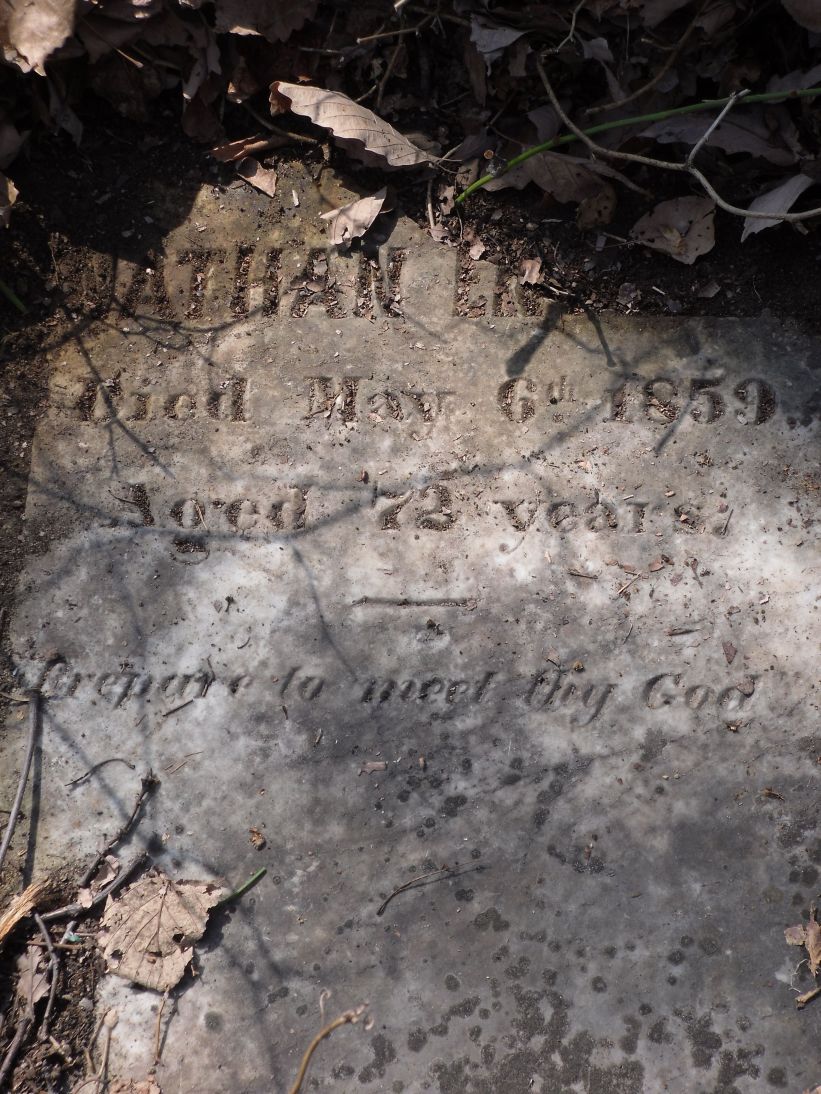
There lies at least one old defender of the War of 1812, Nathan England, said to be a descendant of Bishop England. Nathan was a native of the area, but moved to Baltimore for a time where he started the first temperance hotel called Maypole Inn. His move to Baltimore was to enrich the educatilon of his children at schools in Baltimore. He then returned to the Libertytown area. His tombstone has survived, although it now lies flat.
Also buried there is William Misner who served in the Union Army during the Civil War in Co I, 1st Maryland Infantry, Potomac Home Brigade. His stone was recorded in 1952 but wasn't found in 2008. It may have fallen over and could be buried under years of compost.
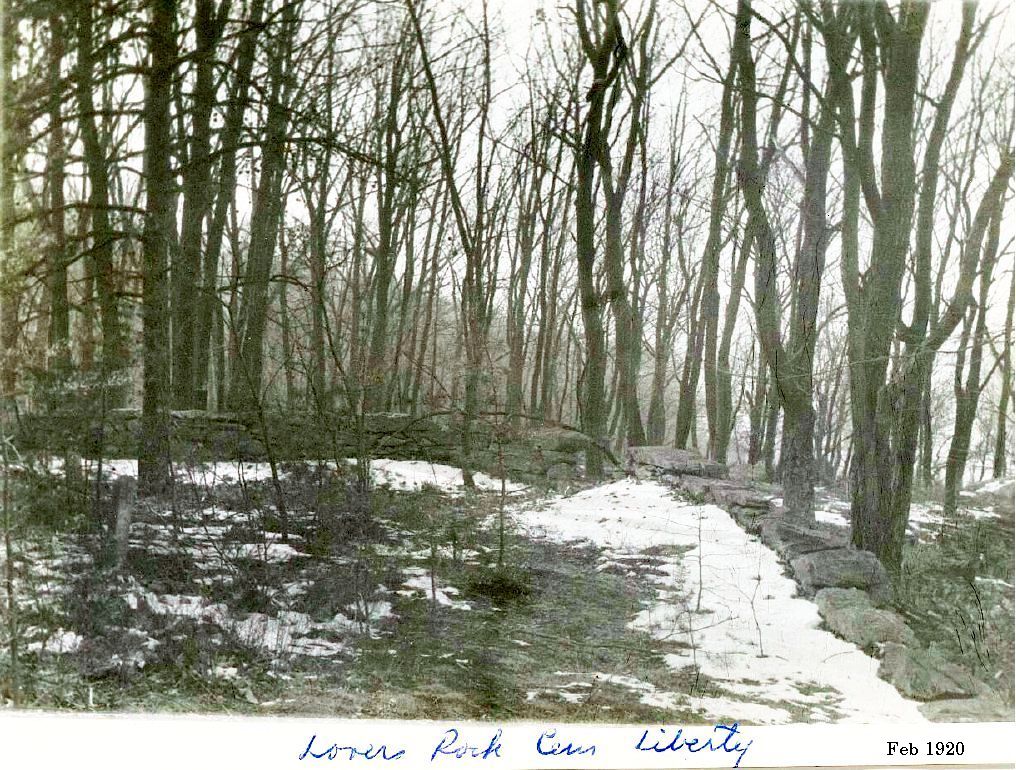
Front of Right Side, looking North |
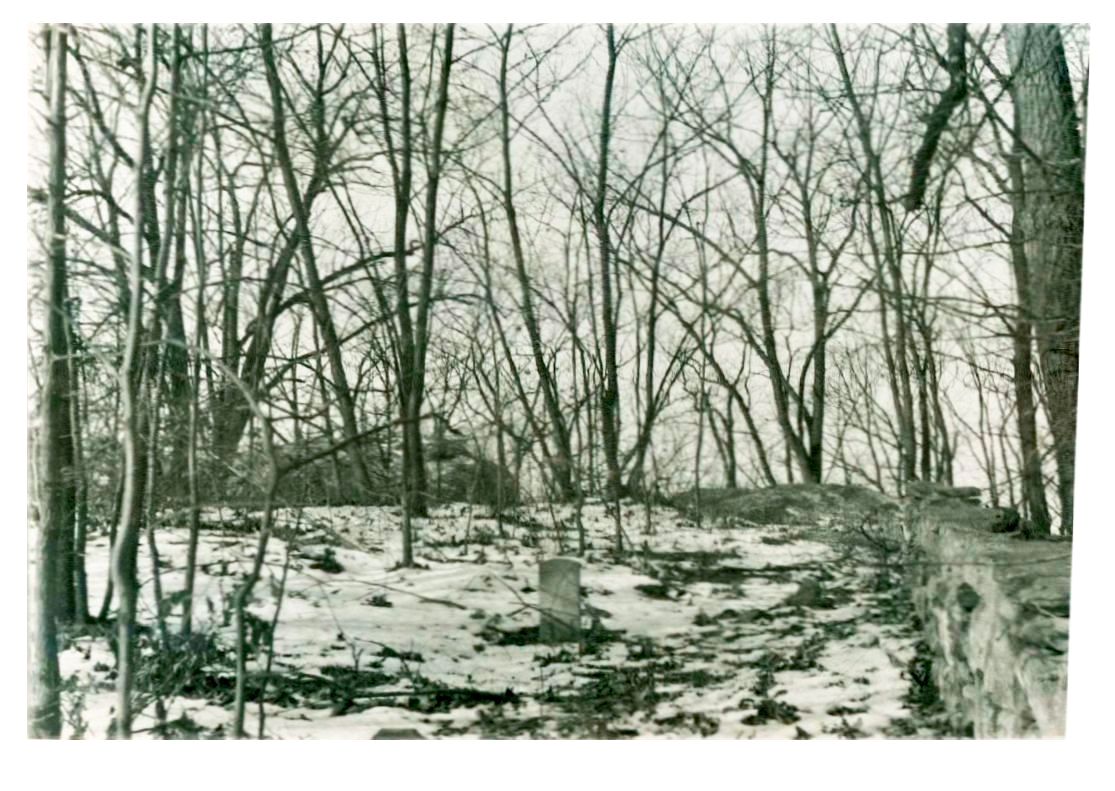
Back of Right Side, looking West |
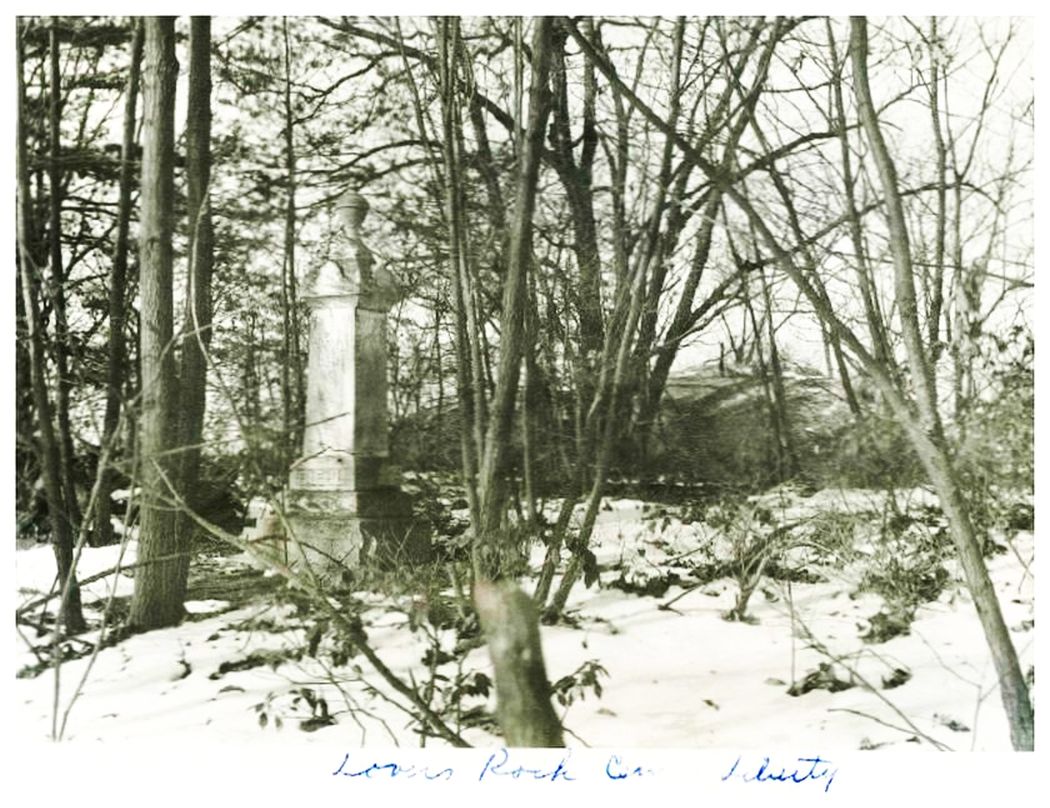
Middle of Cemetery, looking West |
|---|---|---|
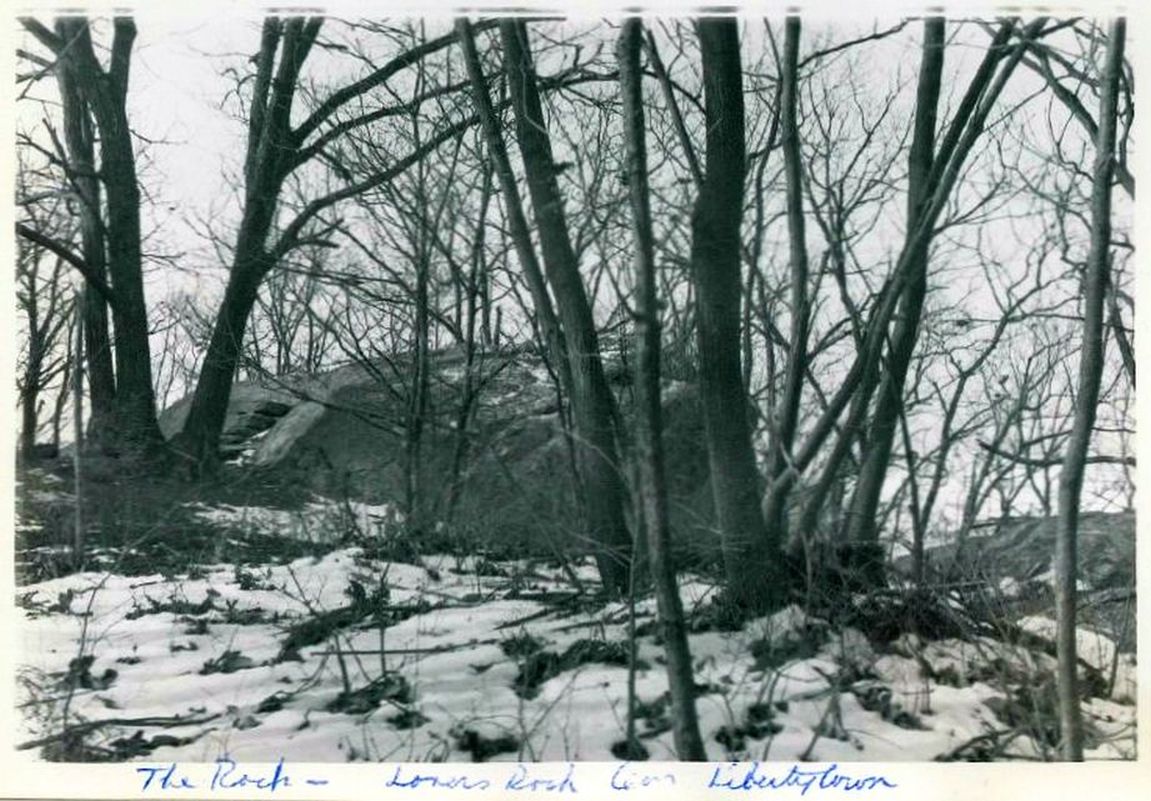
Back of Cemetery |
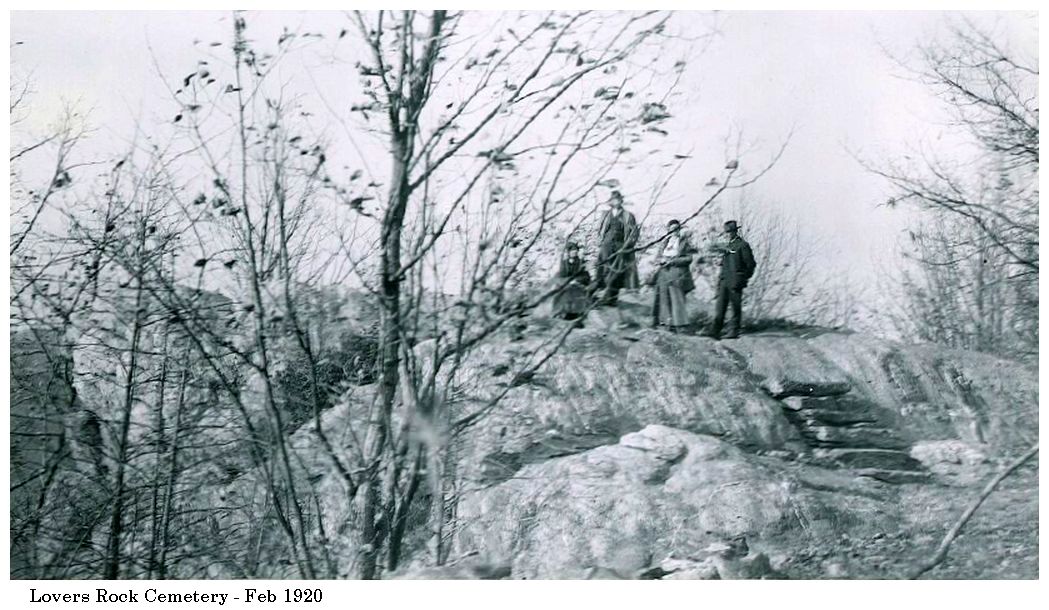
Atop of Lovers Rock |
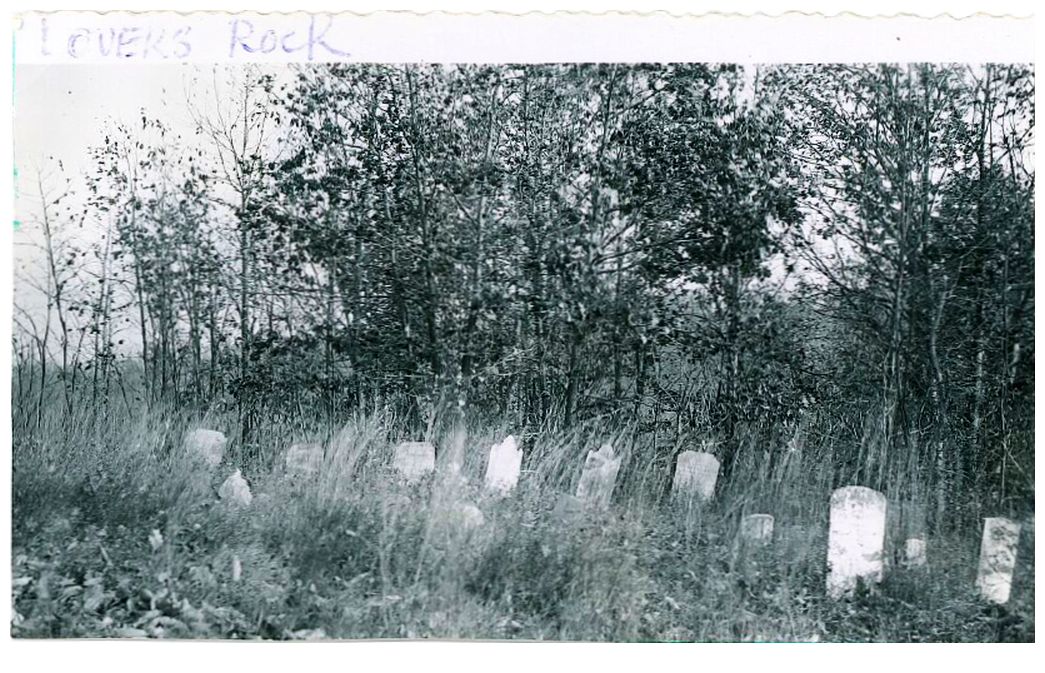
Tombstones |
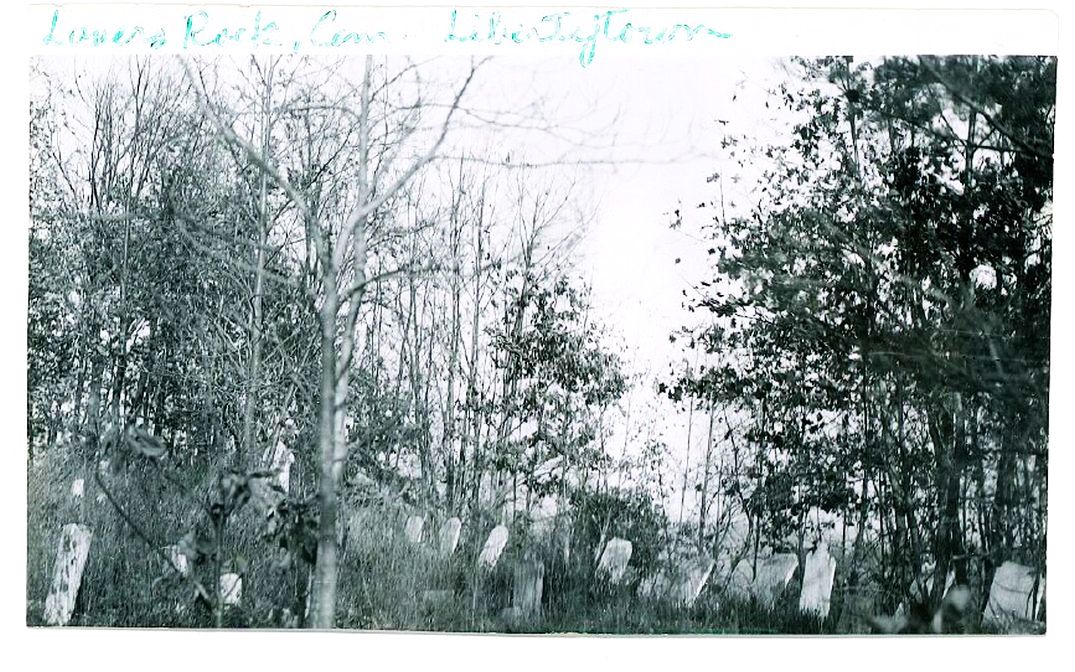
Tombstones |
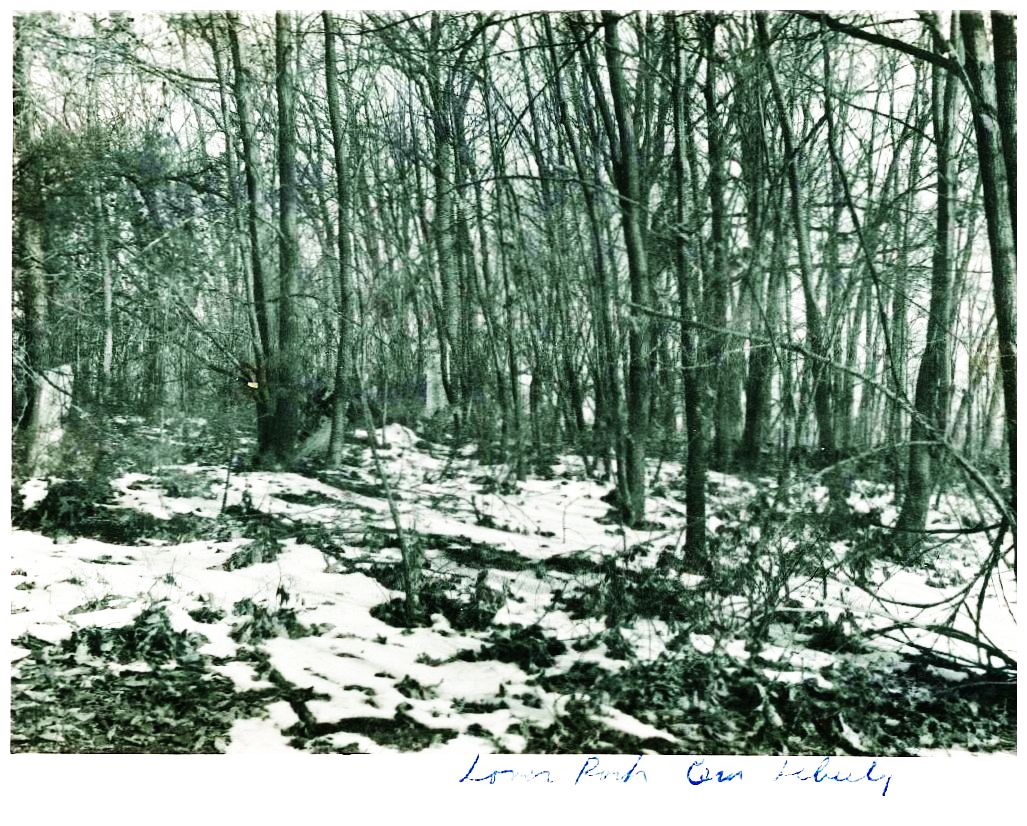
Looking North |
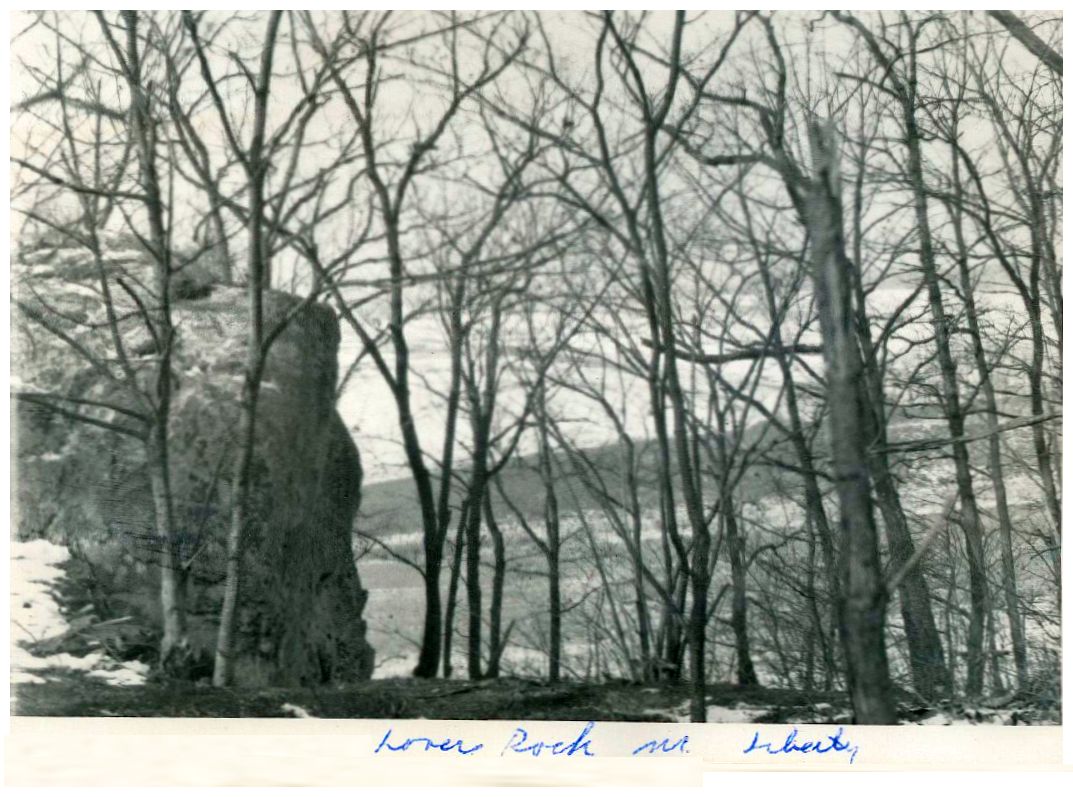
NE Side of Lovers Rock Level below, but still up on ridge |
Vandalism
Only one carving in the rock was found though, on a ledge below, near the broken stones.
Because of the vandalism, the entrance to the cemetery from Rt. 75 (Green Valley Road) was closed in the early 1940's and,
by the time World War II was over, most people forgot about it and later the site became an abandoned secret.
Transcriptions
By 1952, Jacob M. Holdcraft was only able to transcribe 18 tombstones for inclusion in his book Names In Stone.
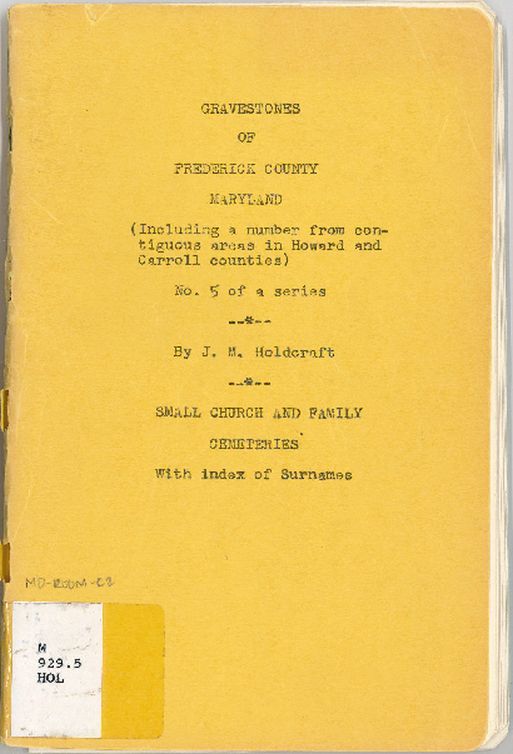
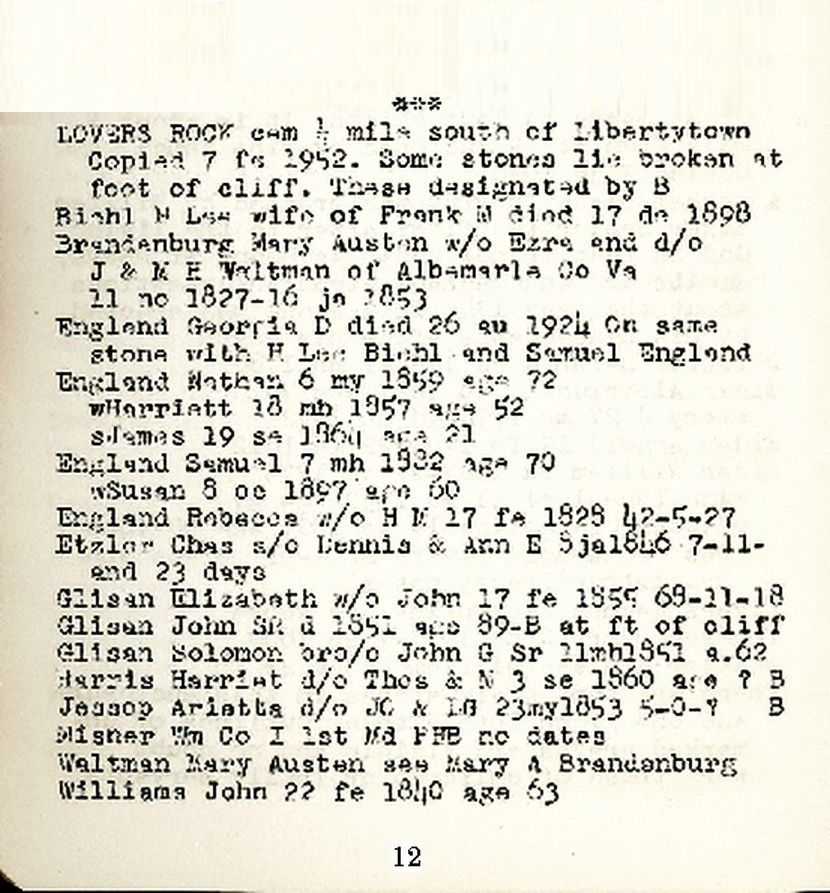
There may be other toppled tombstones buried under the 60+ years of fallen leaves and overgrowth. A thorough cleanup would probably reveal more stones and is planned when access becomes more available. It would be wonderful to see this cemetery restored to its natural beauty.Presented by Dorinda Shepley - Jan 2022
Frederick MDGenWEb




















